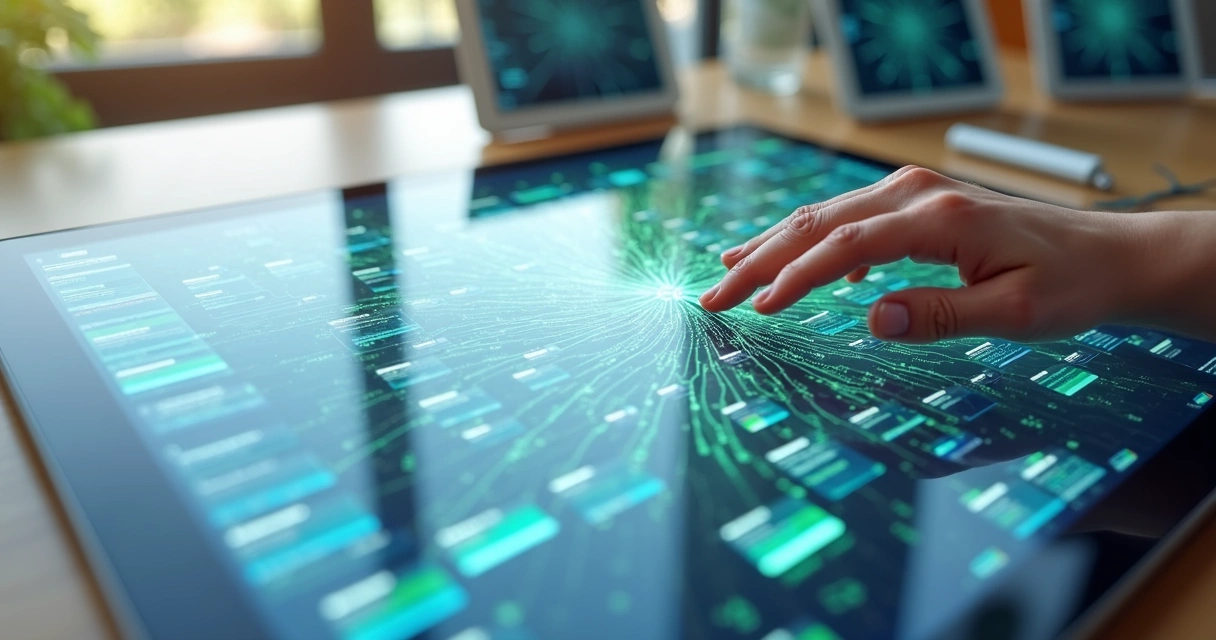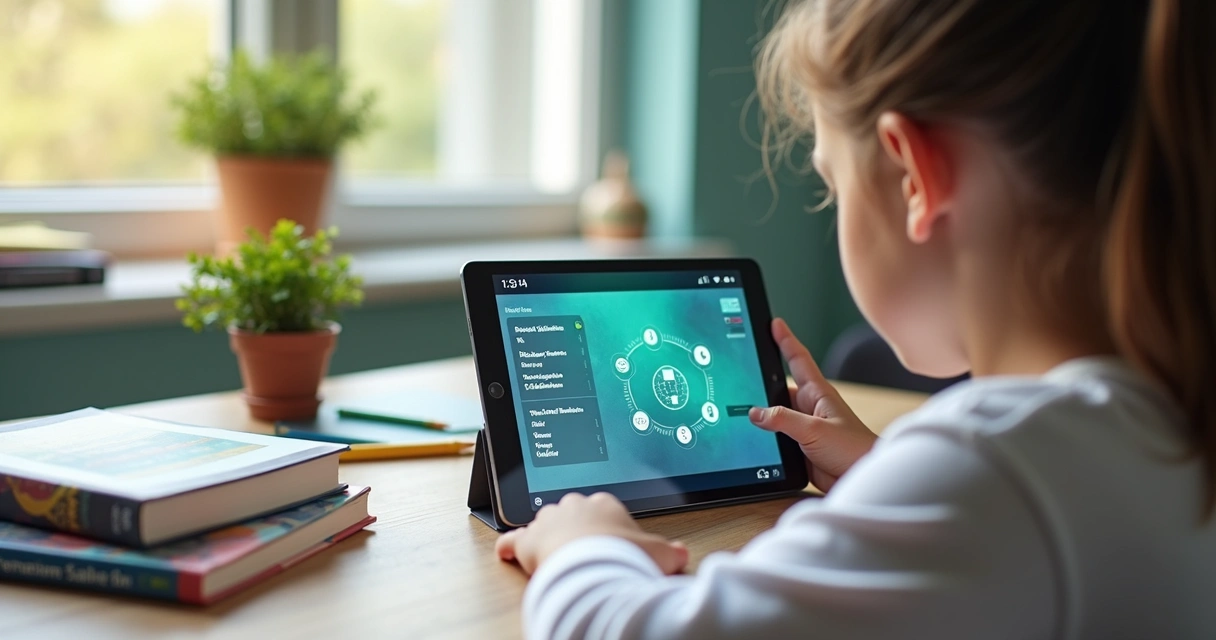
Quick Guide: AI-Powered Visual Note-Taking in 2025
There is something quietly transformative about how we record our thoughts. In 2025, people are no longer satisfied with towers of text or scattered papers. Artificial intelligence is changing the way we visualize, structure, and revisit ideas. It turns simple notes into dynamic maps. Somehow, that makes learning and thinking not only easier, but, sometimes, even enjoyable.
Visual notes make knowledge feel alive.
This guide introduces the main concepts and best practices for using AI in visual annotation in 2025. As we move ahead, you’ll notice examples of how projects like nodeland take advantage of these trends, making study and daily planning both accessible and engaging for everyone.
Why visual notes matter (especially now)
A lot of people feel overwhelmed by the sheer volume of information they have to manage every day. Work, study, life. It all piles up. Studies show that most students (almost 89%) believe taking notes improves their ability to remember and understand content during classes. About 65% prefer handwritten notes, claiming they make comprehension simpler (source). But the story doesn’t end there.
Digital note-taking is now considered by 65% of users to be easier to organize than physical notes (source). Think about that. There’s a desire for both clarity and agility. People want their ideas to move as fast as their minds do.
The role of ai in visual annotation
So, what has AI brought to the table? More than most would guess. It’s not just about converting speech to text or automating a few bullet points. By 2025, AI-powered platforms like nodeland have learned to:
- Understand context: AI recognizes relationships between ideas, grouping related concepts.
- Summarize intelligently: No more endless scrolling. AI can transform a long document into a concise visual summary, often in seconds.
- Suggest connections: While organizing your thoughts, the system proposes links or questions you might have missed.
- Facilitate creativity: Visual layouts help ideas connect in non-linear patterns, much like how real thinking works.
Market growth and user behavior
Interest in smarter annotation tools isn’t slowing down. The market for AI annotation applications is growing rapidly, expected to reach over $2.5 billion by 2033, with a compound annual growth rate of nearly 19% (source). North America alone accounts for more than a third of this usage (source).
Something else is happening: nearly 68% of students already say that such apps boost their study results, and digital notes are becoming the default for organizing complex tasks (source). Yet, interestingly, preferences remain divided. Some still swear by pen and paper.

Key features you’ll find in 2025
If you open a modern note-taking tool right now, certain features will feel almost magical. But in truth, they’re the product of years of iteration and feedback. Here’s what you’ll commonly see in 2025:
- Real-time mind mapping: Type a few ideas, and watch the AI build out a visual map instantly.
- Automatic summarization: Drop in a PDF, article, or your own notes, and see everything condensed visually, key points stand out at a glance.
- AI assistant: Ask follow-up questions, and let the assistant add clarifications or create comparison charts right into your workspace.
- Omni-device syncing: Start on your phone, finish on a laptop, review on a tablet. Maps stay consistent everywhere.
- Interactive flow: Drag, group, and link content as inspiration strikes; the structure bends and adapts in real time.
Projects like nodeland are making this level of interactivity common, bridging the gap between structured and freeform learning. It’s the sort of thing that feels like it was always meant to be part of digital life.
How to create your own ai-powered visual notes
Maybe you’ve never tried AI annotation before, or perhaps you don’t know where to begin. The process feels simple, but each person does it a little differently. Here’s an easy way to start:
- Start with your source – This could be a meeting recording, a scanned text, or even personal reflections. Just bring in what matters to you.
- Let the AI summarize or map out your ideas – Most systems will offer to organize, group, or connect information automatically. Don’t worry if it looks messy at first.
- Edit the structure – Move things around, add colors, link thoughts. Interact as much or as little as you like. AI tools usually learn and adapt based on your patterns.
- Ask questions – If you feel stuck, ask the AI to clarify, rephrase, or expand. Projects like nodeland often shine here, letting you drill into details or zoom out for an overview.
- Access your maps everywhere – Open your work across devices. Review, tweak, or share as you go.
AI helps your ideas breathe and change.
Tips for better visual thinking in a digital world
Visual annotation isn’t only about technology. Many users find that small habits make a huge difference in getting value from their notes. If you want more clarity in your digital workspace, try the following:
- Keep nodes short: Don’t stuff each bubble with paragraphs. It’s easier to scan and rearrange simple statements.
- Color code for meaning: Assign categories or actions by color, not just for decoration. Make your maps functional, not just pretty.
- Review regularly: Don’t make a map and forget it. Revisiting your maps, even briefly, makes information stick much better.
- Combine formats: Blend visual maps with audio notes, links, and even images. Let your ideas take shape in multiple ways.
- Share and collaborate: Invite others to view or contribute to your maps. Sometimes, a different perspective reshapes your own understanding.
The limits and quirks of ai annotation
It’s not all perfect. Sometimes, AI guesses wrong. Context can go missing, or the summary might drop something vital. You may need to do a little manual tweaking, but that’s part of the process. Most users mix automated and personal touches for the best results.
Also, while AI works fast, some people miss the feel of manual notes. Data suggests handwritten and digital approaches both help, so there’s room for a mix (source).
Future directions: where are we heading?
Will AI completely replace human intuition in organizing information? Probably not. What it does offer is a shortcut to clarity. By making maps out of dense information, AI lets humans focus on the bigger picture.

According to studies on student preferences, 89% believe that better note-taking strategies can lift their grades, and over two-thirds say digital notes help them organize ideas more clearly (source).
Projects like nodeland help everyone (not just students) work with information in their own way, building visual narratives where every note connects. Creativity gets a helping hand, and that’s not a small thing.
Conclusion: where to next?
In 2025, AI isn’t just a tool. For many, it feels like a companion, one that listens, learns, and helps reshape chaos into something you can actually use. Visual annotation is both a technology and an art, making it possible to understand more, remember faster, and even teach others what you’ve learned. If you’re curious about what your ideas could look like when given a little space and smarts, now is the time to try. Discover nodeland and see how notes become maps, and learning becomes a little more like thinking out loud.
Frequently Asked Questions
What is AI visual annotation?
AI visual annotation is when artificial intelligence helps people turn written or spoken information into visual formats, such as mind maps, flowcharts, or connected graphs. Instead of working only with plain text, AI creates dynamic images that display how ideas connect, making notes interactive and easy to explore. This technology grows smarter in 2025, often handling summaries, structuring content automatically, and letting users interact with their thoughts visually.
How to use AI for annotations?
To use AI for annotations, start by adding your content (this could be text, audio, video, or documents) into an AI-powered platform. The AI will process the material, highlight key points, and suggest a visual layout, such as a map or flowchart. You can then drag, rearrange, link, or color code ideas as you wish. Tools like nodeland let you ask questions, edit the visuals, and sync your notes across devices. The process can be as guided or hands-on as you like, often adapting to your style over time.
Is AI annotation worth it in 2025?
For most people, especially students and professionals dealing with lots of info, AI annotation is very helpful. Studies show strong user satisfaction: about 68% of students feel smarter annotation apps improve their study habits, while two-thirds find digital notes more organized than paper. In 2025, faster AI, better interfaces, and easy sharing make it an appealing choice for anyone wanting more from their notes. It may not be perfect, but the gains in clarity and speed are, for many, worth it.
What are the best AI annotation tools?
The best tools are those that match your needs and the way you think. Ideally, they offer instant mapping, auto-summary, device syncing, customization, and a smart assistant for Q&A or idea expansion. Projects like nodeland are known for bringing these features together with an interactive, visual-first approach, letting you convert raw content into clear, meaningful structures. Try a few to see what feels natural, but platforms that center visual and interactive note-taking are favored in 2025.
How much does AI annotation cost?
Prices vary. Some basic AI annotation features may be free or bundled into general note-taking apps, while premium services offering advanced visualizations, top-tier AI, and device syncing might charge monthly or annual subscriptions. Typically, costs range from a few dollars per month for individuals to custom pricing for teams or educational institutions. Projects like nodeland often provide free trials or open resources, making it easier to test before deciding on a paid plan.